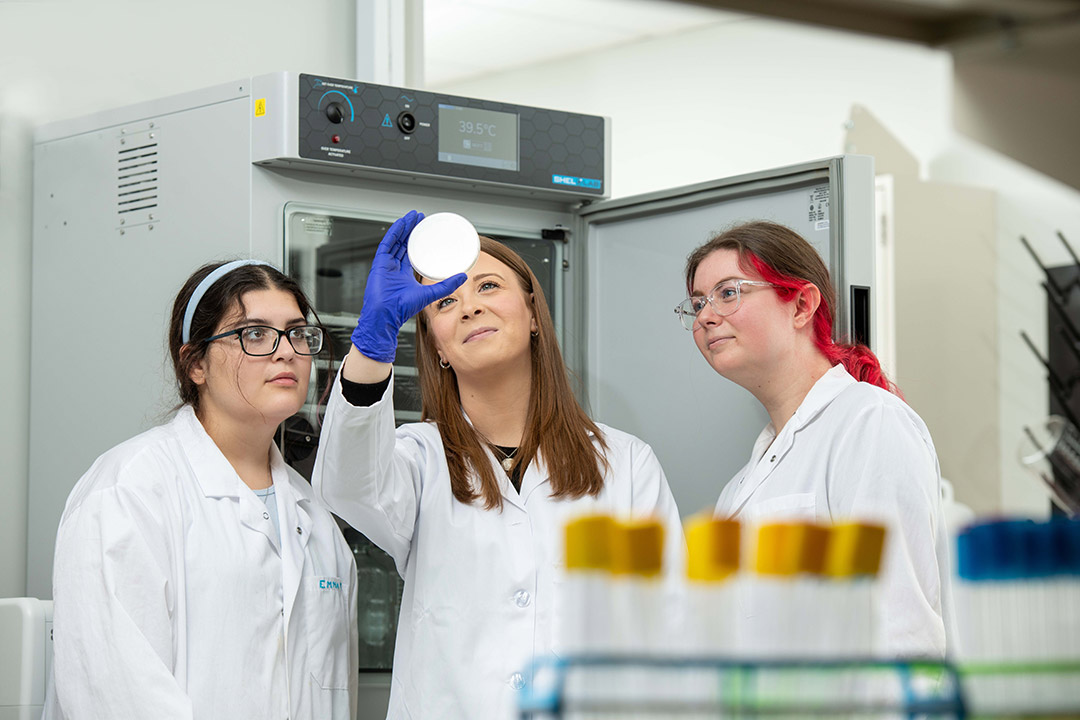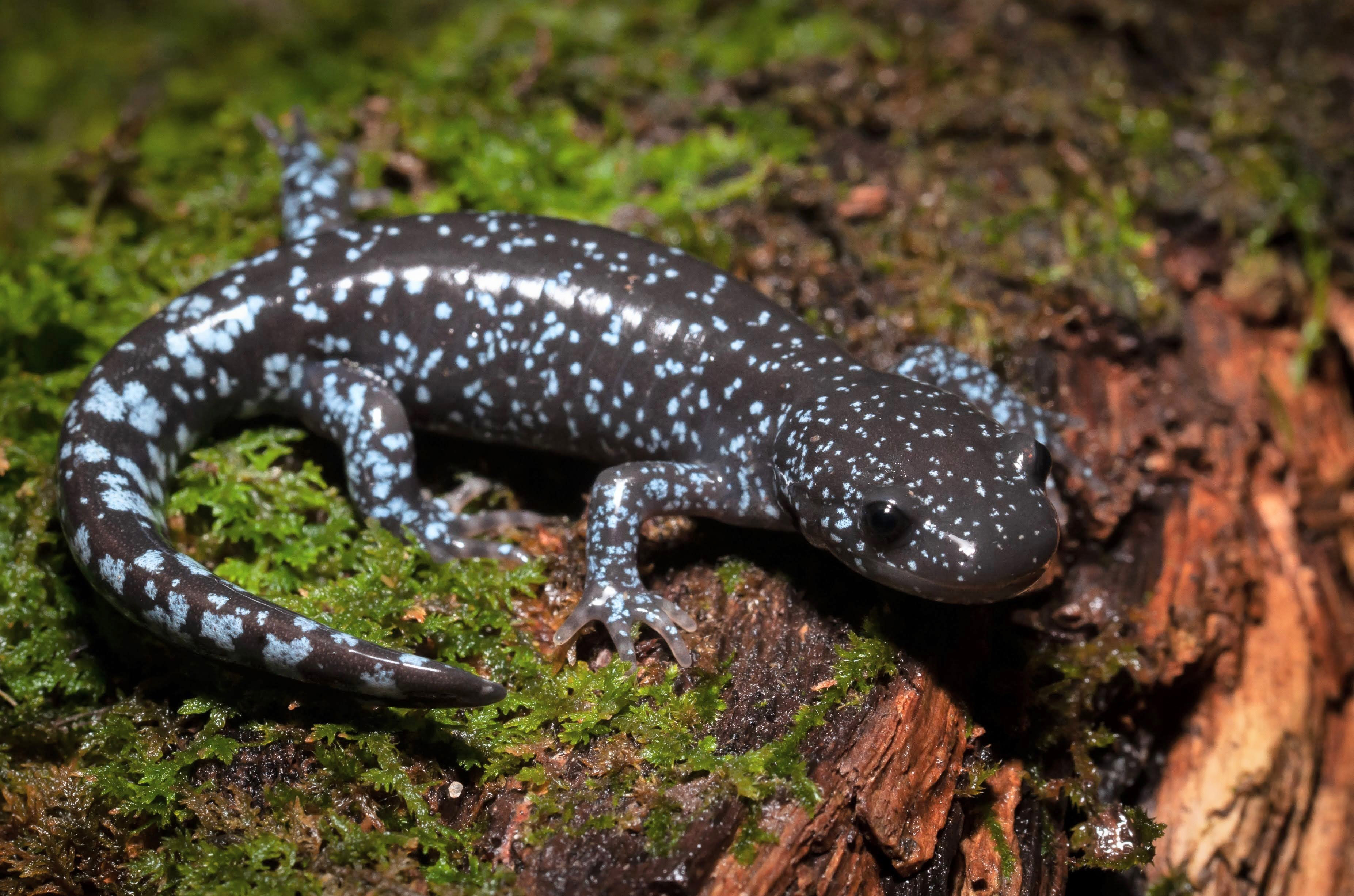Genomics lab allows scientists and students to help protect the local ecosystem
Assistant Professor Elle Barnes leads research studying salamander microbiomes
Scott Hamilton/RIT
Assistant Professor Elle Barnes, center, works in the state-of-the-art genomics lab with students Emma Thompson, left, and Hannah Zarum, right.
Within Brown Hall on RIT’s campus, newly renovated lab spaces house state-of-the-art equipment allowing for essential research. One such space is the genomics lab, where Elle Barnes, assistant professor in the Thomas H. Gosnell School of Life Sciences, is working to help protect one of the key members of the local ecosystem: salamanders.
The chytrid fungus is harming amphibians around the world, so Barnes and her students are sequencing DNA from local salamanders and examining microbes to learn how to protect salamanders from such pathogens.
“It’s hard to get people to understand the sheer biomass that salamanders have in forests,” explained Barnes. “Some scientists estimate that they are the most abundant organism in eastern hardwood forests. We are trying to determine how to build a microbiome that makes them resilient or resistant to the pathogen.”
Barnes’s lab space allows for students to get hands-on experience early on in their academic careers. By using the newest technologies and machines, they will be well prepared when continuing their education or entering their careers.
“It’s been amazing,” said fourth-year biotechnology and molecular bioscience major Hannah Zarum. “I still feel like a kid in a candy store looking at all the machines and technology. It makes me feel like a real scientist.”
Mike Wilhelm/stock.adobe.com
There are more species of salamanders in the eastern United States than anywhere in the world, making them a vital part of the local ecosystem.
DNA sequencers in the lab allow researchers to use genomes to understand what microbes might be doing. Microbiology is difficult to study because microbes often cannot function independently due to their co-dependency on one another. But, scientists can extract DNA from salamanders or from a soil sample, for example, and recapitulate their genome to understand what they might be doing in the environment. In this way, Barnes can try to protect the local salamander species from the deadly chytrid fungus.
An additional benefit of the new lab space in Brown Hall is that multiple scientists use the space, allowing for better feedback and collaboration surrounding different aspects of genomics.
“It’s a big part of what makes that lab space special,” said Barnes. “It’s a wonderful opportunity to bounce ideas off one another and to have our students see that science is not done in an insular fashion.”
Students working in Brown Hall have already noticed this impact and how important and beneficial it is for scientists to work together.
“I came to RIT for the research opportunities,” said Emma Thompson, a third-year biology major. “But what’s really unique about the lab is that it is so collaborative and is really like part of a community. Not only do you get lab experience, but you get field experience as well.”
Barnes, Zarum, and Thompson all had an early interest in science, which led to their working together in the genomics lab at RIT. Barnes grew up on Long Island, N.Y., and spent a lot of time outdoors thanks to her family’s bird watching and camping trips. Zarum, who is from Randolph, Vt., used to go to work with her mom in a hospital laboratory and started looking at slides under microscopes at a young age. Thompson, who is from Cresco, Pa., had her own microscope when she was in kindergarten and built an engine in fourth grade. Both students credit Barnes and their experience in the genomics lab for cementing their future career goals in immunology and microbiology, respectively.
In graduate school Barnes was steered toward ecology by her advisers and had great female professors who explained what it took to become a scientist. They mentored her in a way that showed they cared about her as whole person, including her interests outside of the lab. She now can pass that positive influence along to her own students.
“They all come with interest in science, but it’s maintaining an environment in which they want to stay in science,” said Barnes. “That’s really important to me. That’s what I hope to achieve.”

